Acromioclavicular (AC) joint cysts form as a supraclavicular fluid collection due to the flow of synovial fluid from the glenohumeral joint across the AC joint - the geyser sign is commonly used to describe this phenomenon. They are associated with chronic rotator cuff tears and degenerative AC joints.
On this page:
Clinical presentation
AC joint cysts may present as a pseudotumor above the acromioclavicular joint 5, which is classically described as slow-growing.
Pathology
Etiology
In patients with a full-thickness rotator cuff tear, synovial fluid from the glenohumeral joint collects in the subacromial bursa. This fluid then decompresses into the AC joint via a deficiency in the inferior joint capsule, which may be due to chronic impaction of a high-riding humeral head and/or AC joint osteophytes. The AC joint will become progressively distended, and fluid will decompress further into the supraclavicular soft tissues, forming a cyst 3.
Classification
They can be divided into two types per the Hiller classification according to their etiology 3:
type 1: in advanced acromioclavicular joint arthritis without rotator cuff tear from degenerative changes in the acromioclavicular joint irritating the synovium, with overproduction of fluid and subsequent formation of superficial cysts at the joint
type 2: in chronic rotator cuff tear with superior migration of the humeral head, resulting in irritation and deterioration of the acromioclavicular joint capsule, increased synovial fluid production causes glenohumeral joint fluid to leak into the communicating AC joint to produce cysts (Geyser sign)
Radiographic features
Plain radiograph
There is often a high-riding humeral head abutting the undersurface of the acromion or acromioclavicular joint, indicating rotator cuff tears. There may also be signs of rotator cuff tear arthropathy.
Fluroscopy
After injection of arthrogram solution into the glenohumeral joint, the solution will decompress and extend into the subacromial-subdeltoid bursa (through the cuff tear) and into the AC joint, the so-called geyser sign 1.
Ultrasound
background advanced degenerative changes in the shoulder with a full-thickness rotator cuff tear, as with a bare humeral head sign
-
avascular hypoechoic fluid collection, sometimes multiloculated, above the AC joint
ensure that the collection is genuinely fluid and not an exuberant hypoechoic degenerative change of the acromioclavicular joint or mass with color Doppler
MRI
background advanced degenerative change in the shoulder with a full-thickness rotator cuff tear
T2: hyperintense fluid tracks from the glenohumeral joint space across subacromial bursa and into AC joint 3
Treatment and prognosis
The treatment of AC joint cysts can be either conservative or surgical, with surgical options including 3:
needle aspiration (but AC joint cysts often recur)
surgical excision +/- rotator cuff repair and/or resection of the lateral clavicle / AC joint
In patients with no symptoms and no discomfort, a conservative treatment approach is often preferable 3.
History and etymology
This sign was first described by E Craig in 1984 1,3.
Differential diagnosis
cystic neoplasm


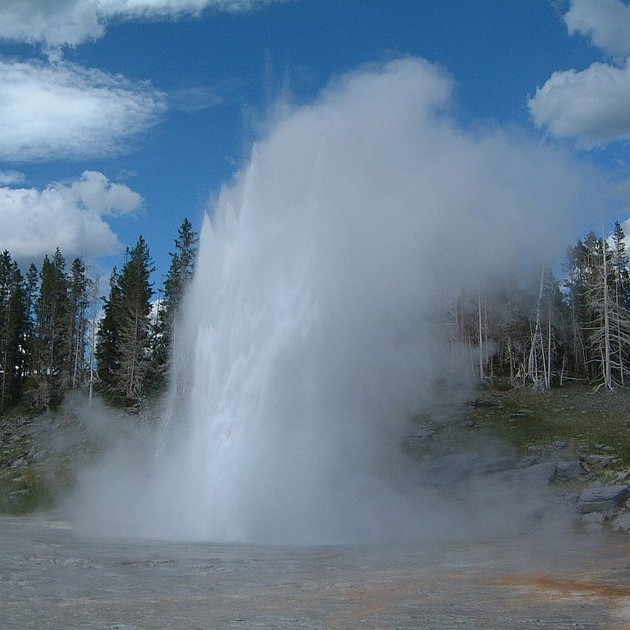

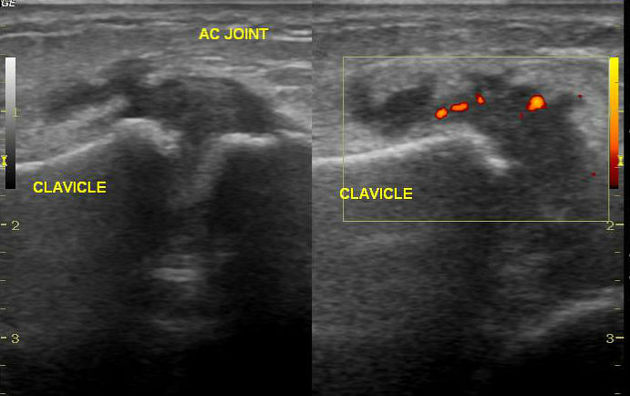
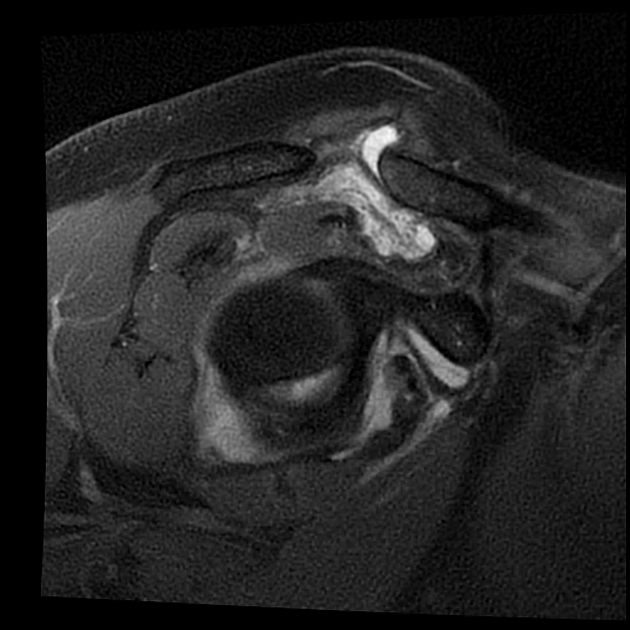
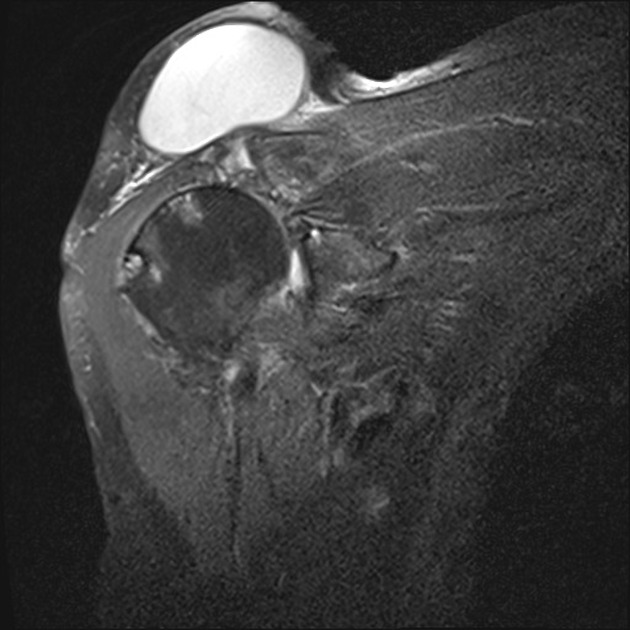
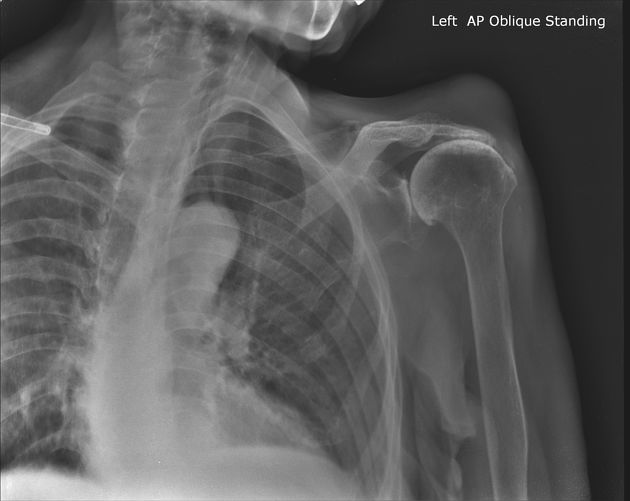
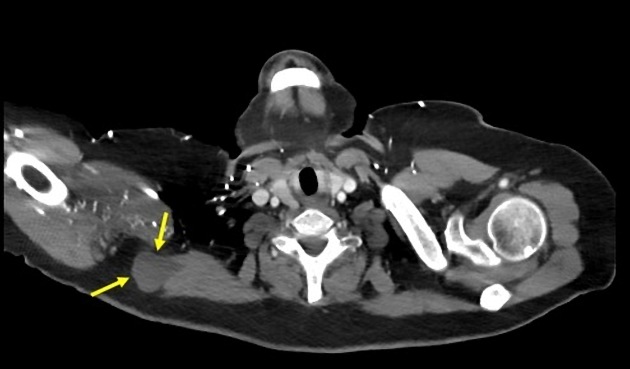
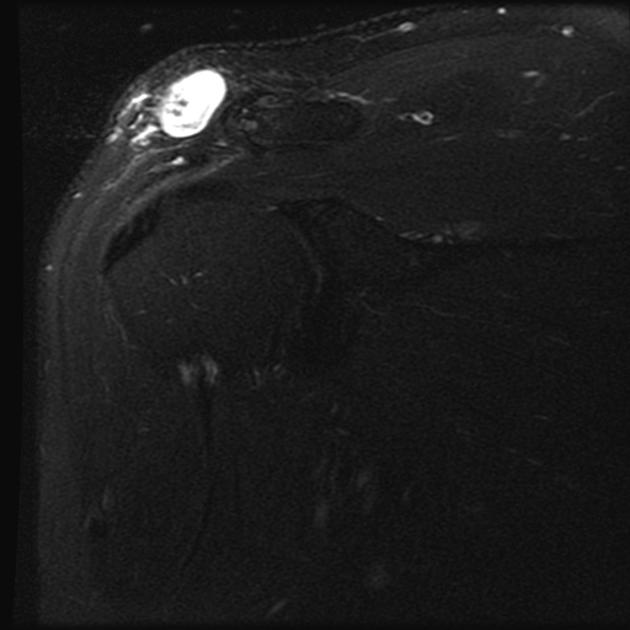
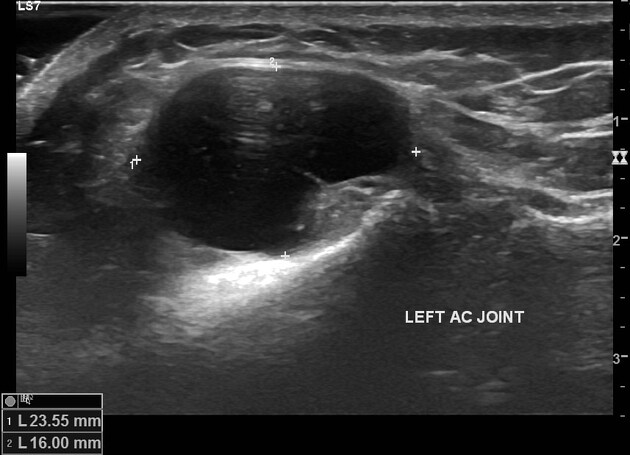


 Unable to process the form. Check for errors and try again.
Unable to process the form. Check for errors and try again.